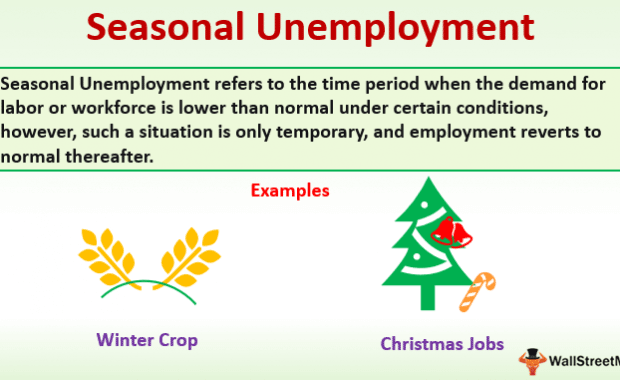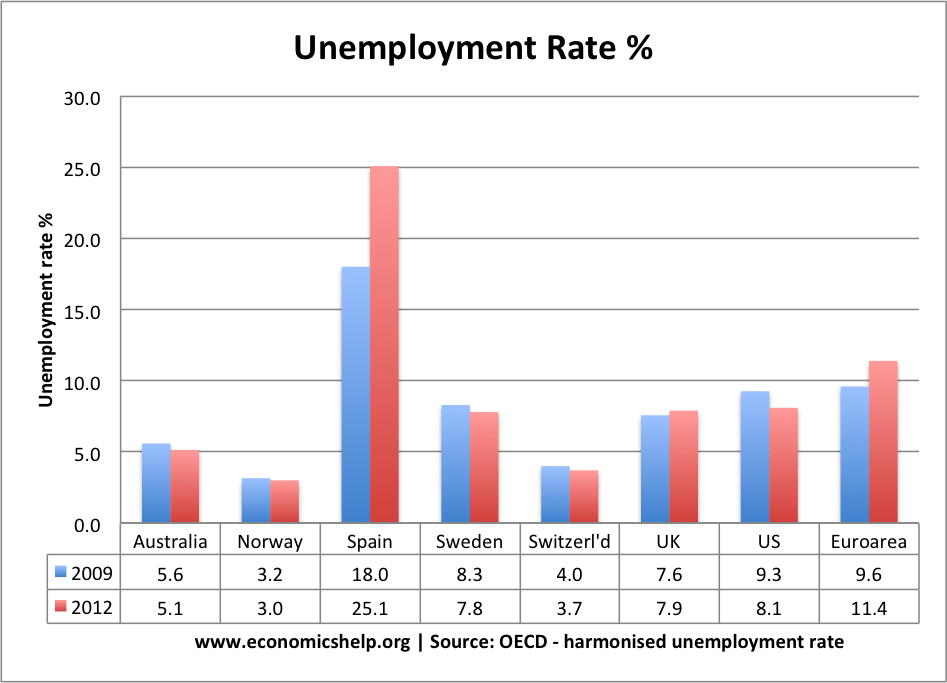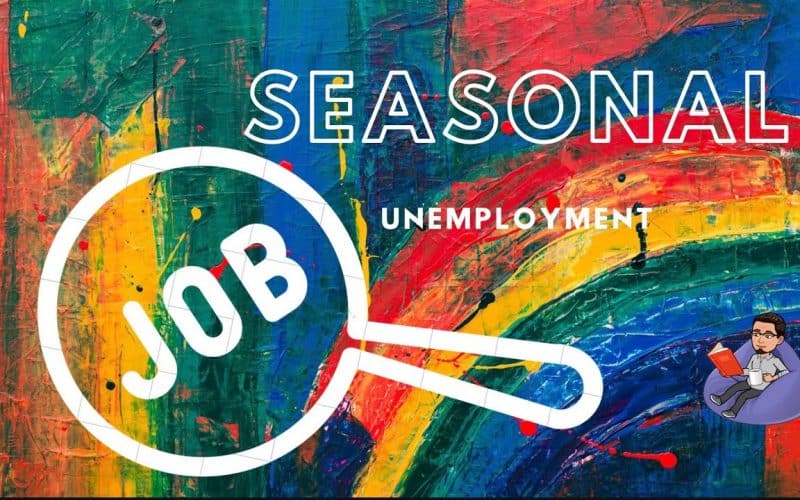Seasonal Unemployment is an increasing matter that needs to be handled in our society. Generally, it has a negative effect both on people who are willing to work; but can not find it and also on the economy of the country. We will be looking at some of the contents that are related to seasonal unemployment, such as examples, its definition to help you understand it, the economic way to define it, and its case in Europe. Let us take a look at what seasonal unemployment is all about.
Seasonal Unemployment
Seasonality refers to changes in output and sales related to the seasons of the year; which also can be related to seasonal workers without jobs; due to the time of year when there are seasonal changes in employment.
Defining unemployment is an event that occurs when a person who is searching for work is unable to find one. And it is also used to measure the health economy of a country. In other words, it also means a situation in which a full-bodied person is willing to work; but finds no work and ends up not being employed.
However, When the demand for labor is lower than usual at specific times of the year, people are unemployed due to seasonality. As a general rule, seasonal unemployment refers to a short-term decrease in employment opportunities
Seasonal Unemployment can be the demand for a specific kind of work; workers in it will change with the change in the season. In other words, the period when the demand for workers as well as the capital stock reduces; because of a decreased demand in the economy at a particular point in time in a year, can cause annual unemployment.
Now, having understood what it is all about, let us take a look at the definitions of seasonal unemployment.

Now, the next topic will lead us to the definition of seasonal unemployment.
Definition Of Seasonal Unemployment
Seasonal unemployment means not only the under-utilization of force but also the resources used in production. Such as; the demand for woolen clothes will be more in winters than in the other seasons; and hence, the need for capital resources and manpower in the textile industry will be more during this period.
The definition of seasonal unemployment is increasing in these industries which are involved in seasonal production activities. Such as; the agricultural industry wherein the demand for workers is more during harvesting; than it’s in need for other months in a year. Similarly, in the case of the hotel industry; the demand for the catering staff as well as the housekeeping staff is more in need during the peak season as compared to the demand in the off-season.
Seasonal unemployment exists because certain industries only try to produce or distribute their products at certain times of the year. Industries where this is common include; farming, tourism, and construction. It also refers to the period when the demand for labor or workforce is lower than the normal; under certain conditions. however, such a situation is only temporary and employment retreats to normal thereafter.
It also occurs as demands shift, from one season to the next. This category can include any workers, whose jobs are dependent on a particular season. Official unemployment statistics will always be set or removed; to account for seasonal unemployment.

How Does Seasonal Unemployment Work?
Any baking stores or restaurant outlets generally make more sales during the festive period such as Thanksgiving or Christmas. What does this mean? There is a need for more hands to help during these seasons than during the normal times of the year. This is exactly how seasonal unemployment works. The quantity of jobs available in an organization corresponds to its personnel need. Employees who work in positions that are directly related to a specific time of year or event are dismissed from their jobs during seasonal unemployment and must seek new employment.
If you want to boycott being unemployed, then you will have to check out the job that suits each season.
Examples of Seasonal Unemployment
There are some interesting examples of seasonal unemployment, which we will at look at for better explanations of what it can be. Let us take a look at some of the examples of seasonal unemployment:
- 1. Teachers may be considered seasonal, based on the fact that most schools in the country cease or limit their operations during the summer; which can also make the country’s system of education fault its operation.
- 2. Construction workers living in an area where there is construction work, can also be affected during cold months; and also challenging because they may lose work in winter.
- 3. Certain retail stores hire seasonal workers during the winter holiday season, to better manage increased sales; then release those workers after the holidays when demand lessens. Thereby causing more seasonal unemployment.
- 4. Another example can be seen in farming when unemployment increases during the winter months; many agricultural jobs end once crops are cut in the fall, and this can lead to workers leaving to find a new job.

Now, having done that, let us look at its case in European countries.
Seasonal Unemployment In Europe
Considering the seasonal unemployment in European Union in Europe, the yearly determined unemployment levels in the 1st and the 3rd quarters; are different on average by around 12% over the last five years; accompanied by simultaneously decreasing unemployment numbers.
Seasonal unemployment in Europe in the 1st quarter of 2018 compared with the 1st quarter of 2014; reduced by 31%, and by 32% when comparing the figures for the two-third quarters.) We decided not to include a representation of seasonal effects on an individual country level; as the individual results could hardly be reasonably explained. A major cause of the partially large differences may result from the different outline conditions.
Seasonal unemployment fluctuations in the European labor market, particularly in the construction and tourism sectors, are common in many European countries. The degree of such in each member state is not only dependent on seasonal weather conditions; but rather, it is also in link with other side conditions such as statutory regulations and regulations under collective agreements, corporate practice; and also on the movement and balance of the foreign workforce in a particular member state. Availability of sufficient workforce numbers, primarily during seasonal peaks; not only represents specific challenges to many employers but also to members of the Public Employment Services network.
Over the last five years, EU 28 average 1st quarter unemployment was 12% higher than that of the 3rd quarter.
Fig. 1: Development of unemployed persons from 1st quarter 2014 through 2nd quarter 2019 – Source: Database – Eurostat lfsq_unemp

Having seen all this, let us go through our conclusion.
What Is Seasonal Unemployment In Economics?
In economics, part of the reason seasonal workers may find themselves unemployed when the season for their job ends is that seasonal jobs are only available for a limited period each year. However, in economics, it is in the observation that people who work in seasonal jobs become unemployed when labor demand falls. This is known as seasonal unemployment in Economics. Furthermore, this typically occurs when one season ends and another begins, such as for a holiday or due to weather changes.
Also in economics, it is in the notice this unemployment occurs when people are unemployed during specific times of the year when labor demand is lower than usual. For example, a job can only be available for a few months of the year in tourist areas, and this can be a major issue leading to seasonal unemployment.
Conclusion
In conclusion, we have learned about issues facing seasonal unemployment, looking at what it is all about in economics, what is its definition, how it affects Europe’s couSeasonal Unemploymentntry and its examples. It does affect the employment rate of a country, not only that; it also affects probably things connected to it such as; a countries capital stock, farm products [agriculture], teaching, etc. Lastly, It does also affect the tourism sector and hospitality sector of an affected country.
FAQs On Seasonal Unemployment
What is seasonal unemployment?
However, When the demand for labor is lower than usual at specific times of the year, people are unemployed due to seasonality. As a general rule, seasonal unemployment refers to a short-term decrease in employment opportunities
What is example of seasonal unemployment?
An example of seasonal unemployment is a certain retail store hiring seasonal workers during the winter holiday season, to better manage increased sales; then releasing those workers after the holidays when demand lessens. Thereby causing more seasonal unemployment.
How does seasonal unemployment happen?
Seasonal unemployment exists only for a portion of the year. Production occurs only during certain seasons in industries such as agriculture and tourism, and there is a lower demand for labor during seasons when there isn’t a lot of work to be done.
{
“@context”: “https://schema.org”,
“@type”: “FAQPage”,
“mainEntity”: [
{
“@type”: “Question”,
“name”: ” What is seasonal unemployment?”,
“acceptedAnswer”: {
“@type”: “Answer”,
“text”: ”
However, When the demand for labor is lower than usual at specific times of the year, people are unemployed due to seasonality. As a general rule, seasonal unemployment refers to a short-term decrease in employment opportunities
”
}
}
, {
“@type”: “Question”,
“name”: ” What is example of seasonal unemployment?”,
“acceptedAnswer”: {
“@type”: “Answer”,
“text”: ”
An example of seasonal unemployment is a certain retail store hiring seasonal workers during the winter holiday season, to better manage increased sales; then releasing those workers after the holidays when demand lessens. Thereby causing more seasonal unemployment.
”
}
}
, {
“@type”: “Question”,
“name”: ” How does seasonal unemployment happen?”,
“acceptedAnswer”: {
“@type”: “Answer”,
“text”: ”
Seasonal unemployment exists only for a portion of the year. Production occurs only during certain seasons in industries such as agriculture and tourism, and there is a lower demand for labor during seasons when there isn’t a lot of work to be done.
”
}
}
]
}






